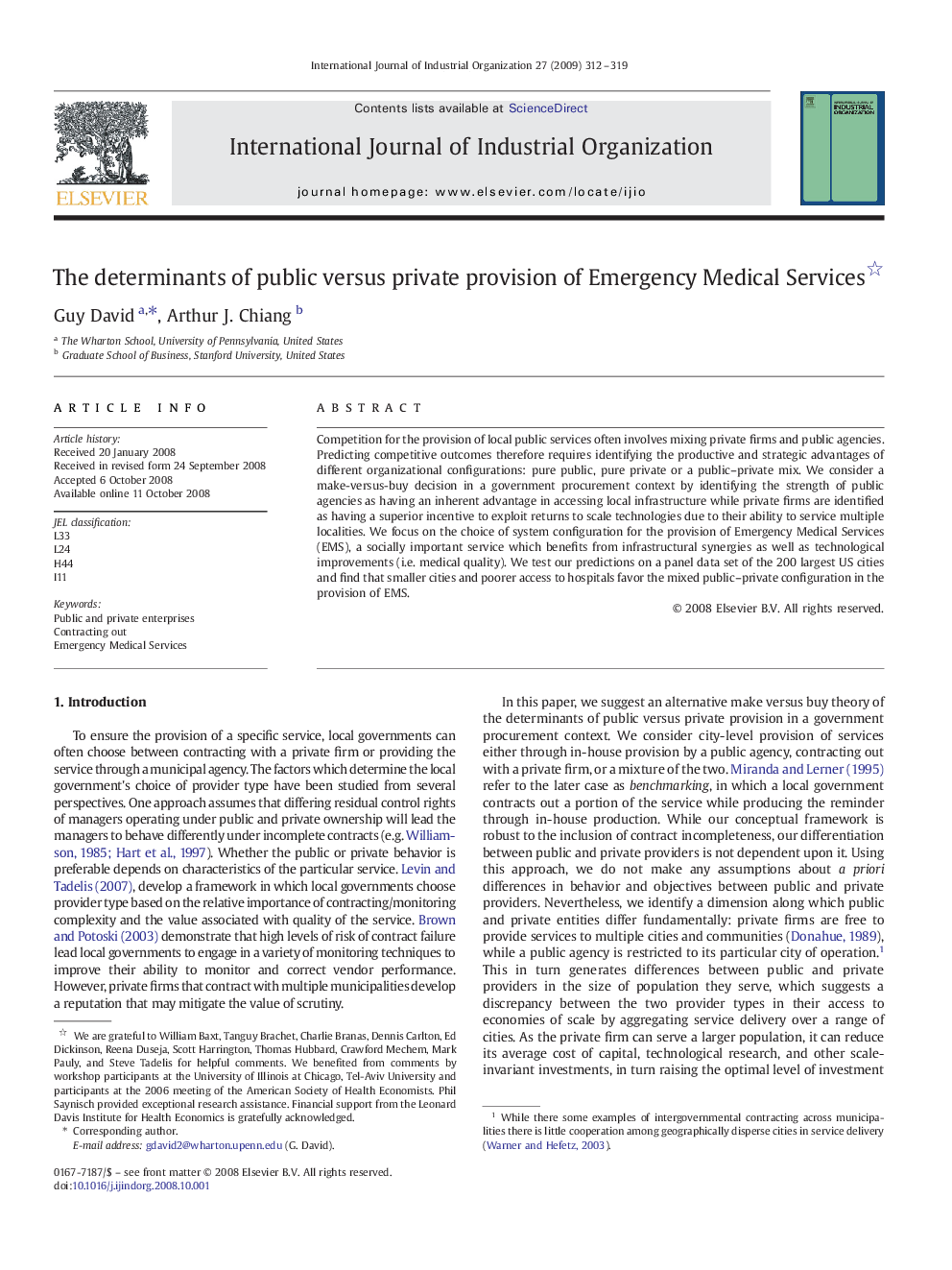| Article ID | Journal | Published Year | Pages | File Type |
|---|---|---|---|---|
| 5078645 | International Journal of Industrial Organization | 2009 | 8 Pages |
Abstract
Competition for the provision of local public services often involves mixing private firms and public agencies. Predicting competitive outcomes therefore requires identifying the productive and strategic advantages of different organizational configurations: pure public, pure private or a public-private mix. We consider a make-versus-buy decision in a government procurement context by identifying the strength of public agencies as having an inherent advantage in accessing local infrastructure while private firms are identified as having a superior incentive to exploit returns to scale technologies due to their ability to service multiple localities. We focus on the choice of system configuration for the provision of Emergency Medical Services (EMS), a socially important service which benefits from infrastructural synergies as well as technological improvements (i.e. medical quality). We test our predictions on a panel data set of the 200 largest US cities and find that smaller cities and poorer access to hospitals favor the mixed public-private configuration in the provision of EMS.
Related Topics
Social Sciences and Humanities
Economics, Econometrics and Finance
Economics and Econometrics
Authors
Guy David, Arthur J. Chiang,
